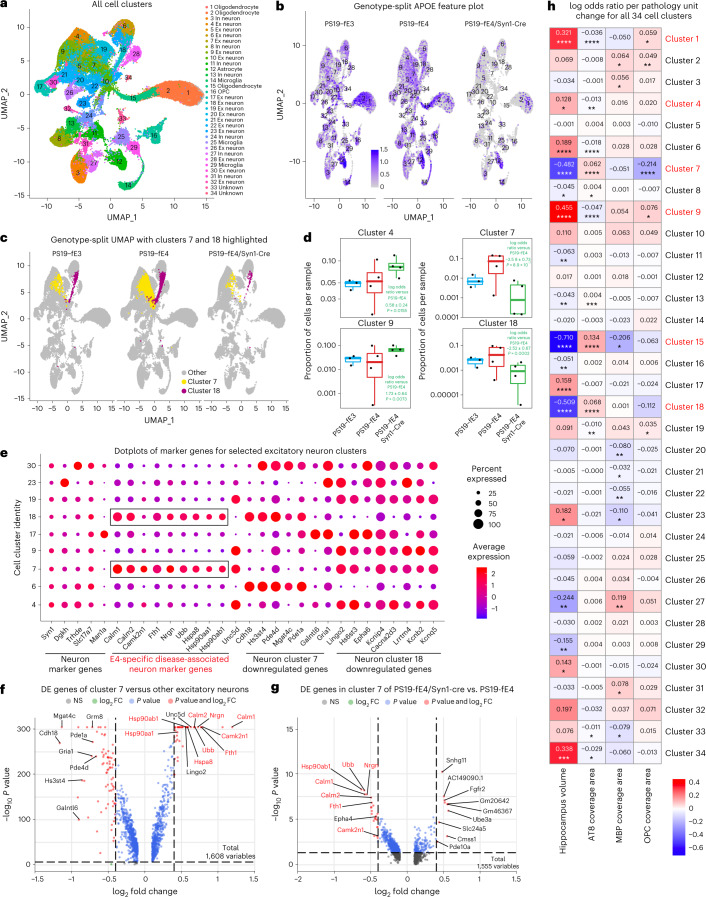Fig. 5. Neuronal APOE4 removal diminishes disease-associated subpopulations of neurons.
a, UMAP plot of all 34 distinct cell clusters in the hippocampi of 10-month-old PS19-fE4 mice with no Cre (n = 4) or with Syn1-Cre (n = 4) and PS19-fE3 mice with no Cre (n = 3). b, Feature plot illustrating the relative levels of normalized human APOE gene expression across all 34 hippocampal cell clusters. c, UMAP plot highlighting cells in excitatory neuron clusters 7 and 18 for each mouse genotype group. d, Box plot of the proportion of cells from each sample in clusters 4, 7, 9 and 18. PS19-fE4 mice with no Cre (n = 4) or with Syn1-Cre (n = 4) and PS19-fE3 mice with no Cre (n = 3). The lower, middle and upper hinges of the box plots correspond to the 25th, 50th and 75th percentiles, respectively. The upper whisker of the box plot extends from the upper hinge to the largest value no further than 1.5 × IQR from the upper hinge. IQR, interquartile range or distance between 25th and 75th percentiles. The lower whisker extends from the lower hinge to the smallest value at most 1.5 × IQR from the lower hinge. Data beyond the end of the whiskers are outlier points. The log odds ratios are the mean ± s.e.m. estimates of log odds ratio for these clusters, which represents the change in the log odds of cells per sample from PS19-fE4/Syn1-Cre mice belonging to the respective clusters compared to the log odds of cells per sample from PS19-fE4 mice. See Supplementary Table 1 for detailed information. e, Dot-plot of normalized average expression of marker genes for selected excitatory neuron clusters, highlighting genes that are significantly upregulated and downregulated in excitatory neuron clusters 7 and 18. The size of the dots is proportional to the percentage of cells expressing a given gene. f, Volcano plot of the DE genes between excitatory neuron cluster 7 and all other excitatory neuron clusters. Dashed lines represent log2 fold change threshold of 0.4 and P value threshold of 0.00001. NS, not significant. g, Volcano plot of the DE genes in excitatory neuron cluster 7 in PS19-fE4/Syn1-Cre mice versus PS19-fE4 mice. Dashed lines represent log2 fold change threshold of 0.4 and P value threshold of 0.05. h, Heat map plot of the log odds ratio per unit change in each pathological parameter for all cell clusters, with clusters that have significantly increased or decreased logs odds ratio after neuronal APOE4 removal highlighted in red (refer to d). The log odds ratio represents the mean estimate of the change in the log odds of cells per sample from a given animal model, corresponding to a unit change in a given histopathological parameter. Negative associations are shown in blue and positive associations are shown in red. Unadjusted P values in d are from fits to a GLMM_AM and unadjusted P values in h are from fits to a GLMM_histopathology (Supplementary Table 2, which includes FDR-adjusted P values, and Methods provide more details); the associated tests were two-sided. For data in f,g, the unadjusted P values and log2 fold change values used were generated from the gene-set enrichment analysis (Methods) using the two-sided Wilcoxon rank-sum test as implemented in the FindMarkers function of the Seurat package. Gene names highlighted in red text indicate they are selected marker genes for DANs. All error bars represent s.e.m. Ex neuron, excitatory neuron; In neuron, inhibitory neuron.

